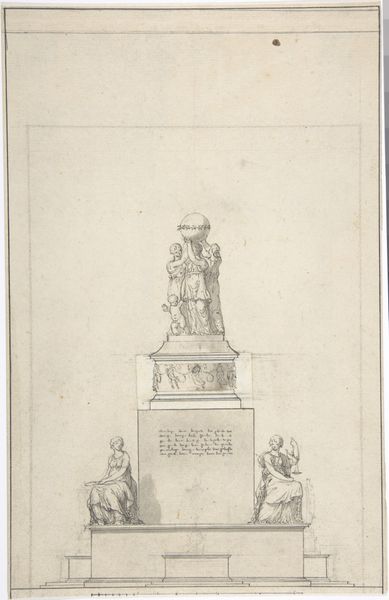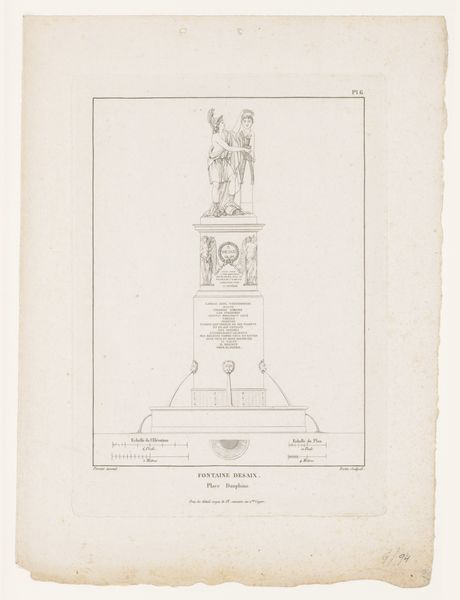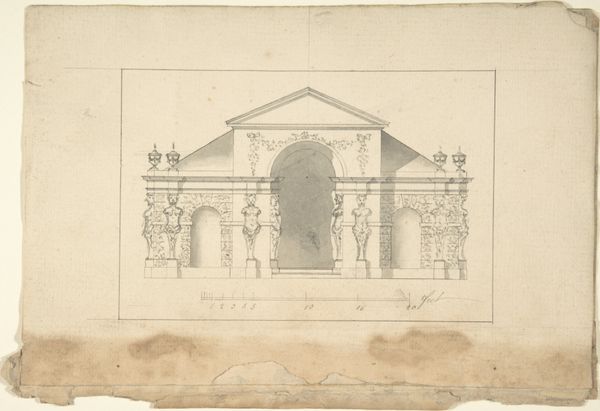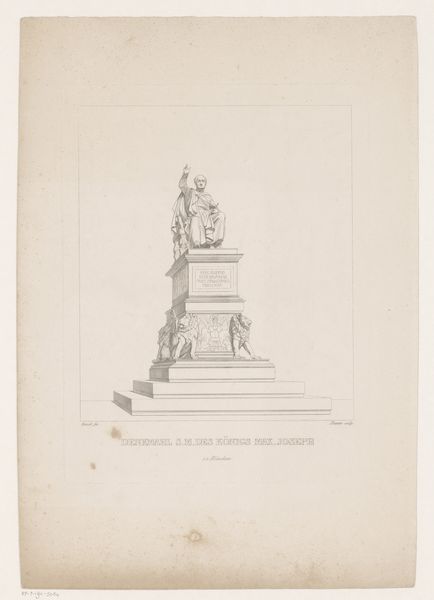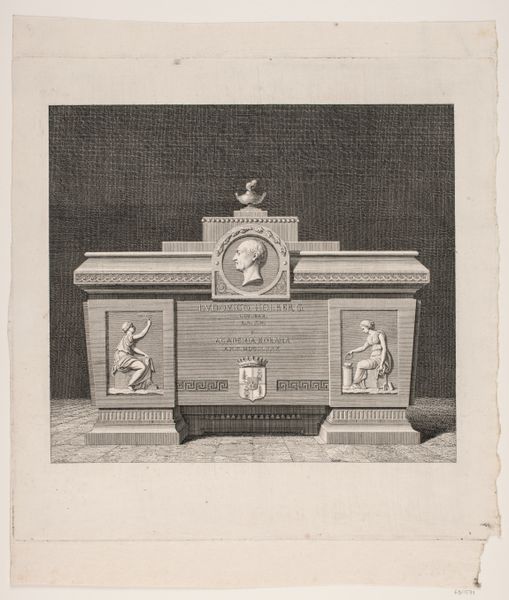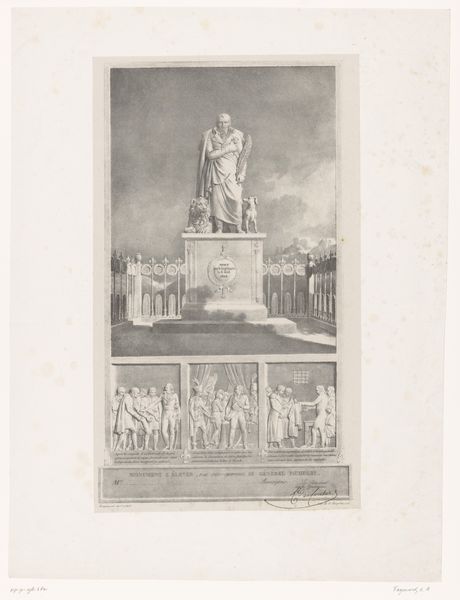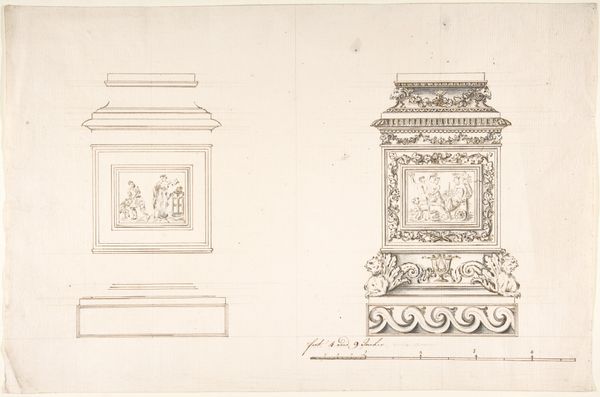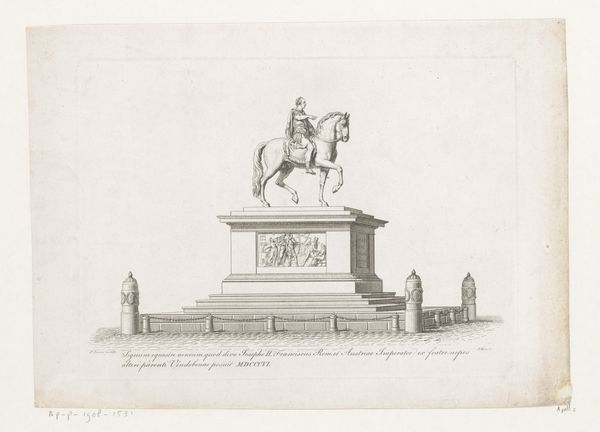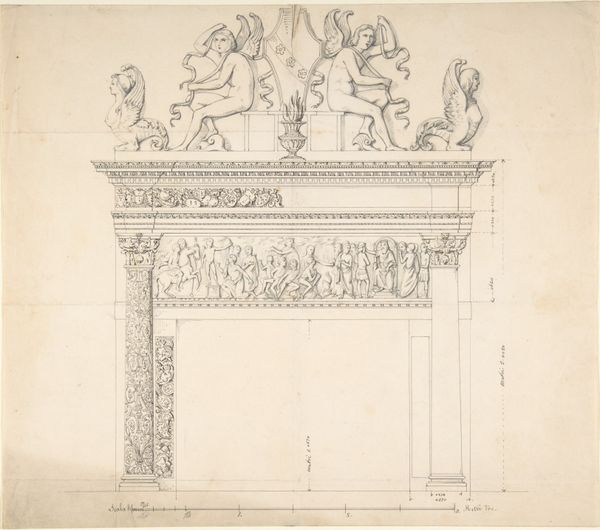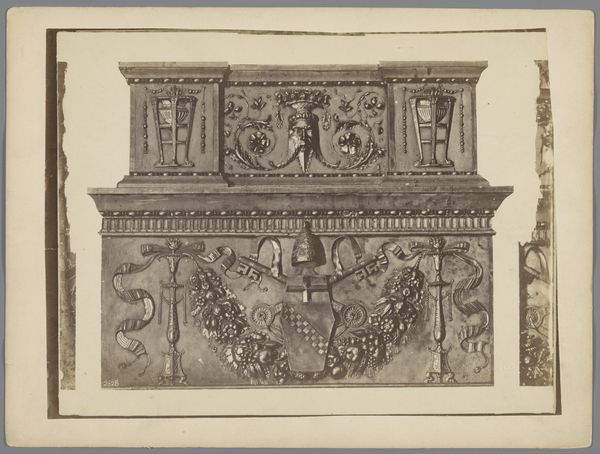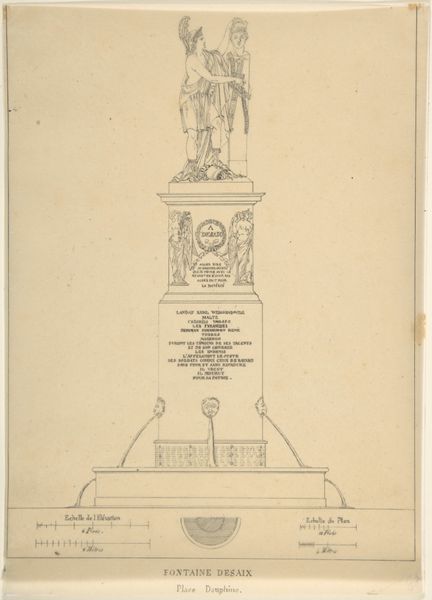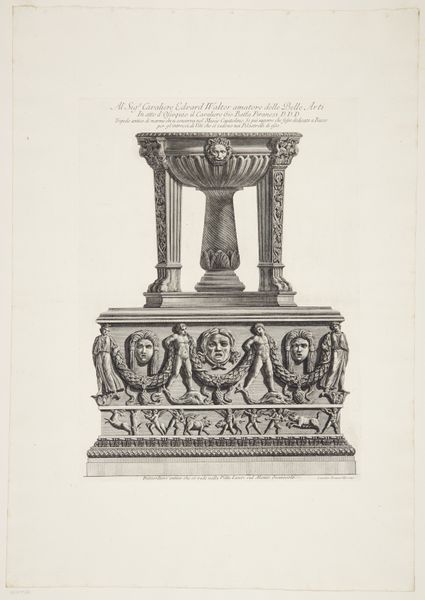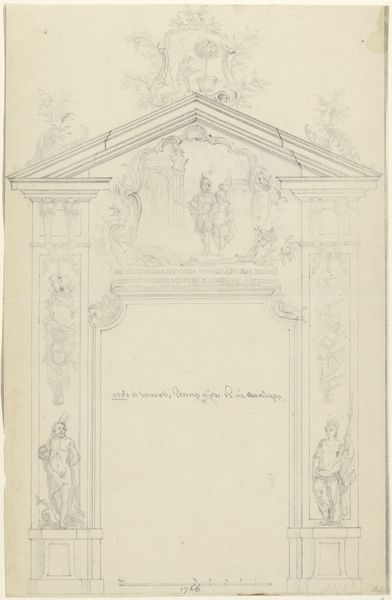
Entwurf eines Grabmals für Johann Philipp Bethmann-Hollweg 1813
0:00
0:00
drawing, relief, paper, ink, architecture
#
drawing
#
relief
#
paper
#
ink
#
romanticism
#
history-painting
#
architecture
Copyright: Public Domain
Curator: Looking at this piece, my immediate sense is one of quiet solemnity. It's meticulously rendered, though the style evokes classical restraint and composure. Editor: That’s interesting. I see more than quiet solemnity, I perceive an almost theatrical rendering of grief—the dramatic gestures of mourning set against a backdrop of rather formal architecture. This is Bertel Thorvaldsen’s 1813 ink and paper drawing, "Entwurf eines Grabmals für Johann Philipp Bethmann-Hollweg", a design for a tomb housed right here at the Städel Museum. Curator: A tomb, yes, a final monument, literally set in stone – or rather, envisioned on paper! I'm particularly drawn to the imagery— the figures, the angels—each holds such weight, representing aspects of life, loss, and the promise of transcendence. Note the classical figures, echoing themes found across cultures: suffering, death, commemoration, a sense of eternity. Editor: I can see how one might connect it to ideas of eternity through shared symbols. However, it's important to examine the historical context: Johann Philipp Bethmann-Hollweg was a prominent banker. His social standing granted him the opportunity to be remembered in this lavish and theatrical way, wouldn’t you agree? How do these monuments solidify existing power structures? Who has the privilege of such remembrance? Curator: Power and privilege are clearly part of the commission, certainly. But I think that it’s important to appreciate how the design communicates its message through these carefully chosen symbols, referencing, for example, the prevalent Romanticism of the time. Those yearning, grieving figures! The universality of mourning—the idea that we are all bound by these human experiences, regardless of class or origin—still holds true. Editor: Well, to push that a little further: Even sorrow can become a commodity under the right circumstances, commodified and performed. The idealization of grief, rendered in this grand Romantic style, obscures some real, raw experiences of injustice in this time. How much of that genuine feeling is flattened, or even distorted? Curator: Perhaps, but the potency of symbols is precisely this ability to simultaneously mask and reveal deeper cultural truths. These emblems are cultural touchstones through which later generations find a connection. Editor: And with an acknowledgement of these contradictions, of the simultaneous comforts and manipulations that operate within representations of death, the design starts to reveal itself as far more than simply a funerary plan, no? Curator: Yes, I can certainly appreciate your point about challenging these inherited images, about the social dimensions of memorialization—offering us a way to critically reflect on their role across time. Editor: Precisely, thinking about these critical lenses allows for a more textured encounter with this beautiful drawing!
Comments
No comments
Be the first to comment and join the conversation on the ultimate creative platform.
